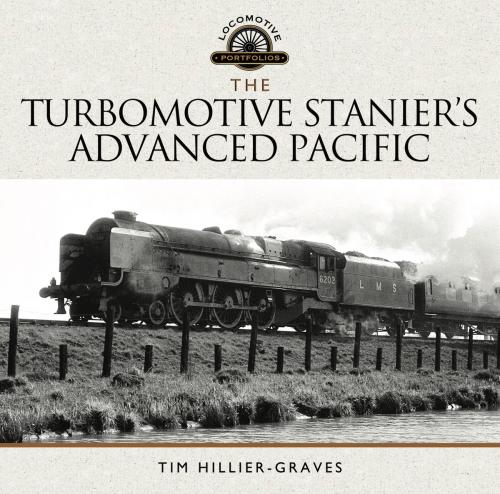The Turbomotive: Stanier's Advanced Pacific
Nonfiction, Reference & Language, Transportation, Railroads, Science & Nature, Technology, Business & Finance| Author: | Tim Hillier-Graves | ISBN: | 9781473885769 |
| Publisher: | Pen and Sword | Publication: | March 30, 2017 |
| Imprint: | Pen and Sword Transport | Language: | English |
| Author: | Tim Hillier-Graves |
| ISBN: | 9781473885769 |
| Publisher: | Pen and Sword |
| Publication: | March 30, 2017 |
| Imprint: | Pen and Sword Transport |
| Language: | English |
Turbomotive was unique in Britain's railway history, and an experimental engine that proved successful but came too late to effect the direction of steam development or deflect the onset of diesel and electric locomotives. It was the brainchild of two of the most influential engineers of the twentieth century – William Stanier of the LMS and Henry Guy of Metropolitan Vickers. They hoped that turbine power, which had already revolutionized ships propulsion and power stations, would do the same for the railways. When Turbomotive appeared in 1935, she became a PR phenomenon at a time when commercial rivalry between the LMS and the LNER was reaching its height. Its launch at Euston in June was accompanied by a great fanfare and much publicity. Such was the interest in this 'revolutionary' idea that the engine would attract attention all her life. Although producing good but not remarkable performances, she remained in service, plying her trade between London and Liverpool for longer than anyone predicted. Most expected a quick rebuild to conventional form, but the coming of war and lack of resources meant that she carried on until 1950 in turbine form. Inevitably, change came when maintenance costs seemed likely to escalate and rebuilding seemed unavoidable. She reappeared in August 1952, part Princess and part Coronation, but her new life was cut short by the disaster at Harrow in October. Although many thought her repairable, she was scrapped to make way for another 'experimental' steam engine. This book presents the compulsive and fascinating story of this remarkable locomotive, drawn from a wide variety of sources, many previously untapped and unpublished, including memories of the designers, the crew who drove her, accountants and hardheaded business men, PR teams, the press, the passengers and many more.
Turbomotive was unique in Britain's railway history, and an experimental engine that proved successful but came too late to effect the direction of steam development or deflect the onset of diesel and electric locomotives. It was the brainchild of two of the most influential engineers of the twentieth century – William Stanier of the LMS and Henry Guy of Metropolitan Vickers. They hoped that turbine power, which had already revolutionized ships propulsion and power stations, would do the same for the railways. When Turbomotive appeared in 1935, she became a PR phenomenon at a time when commercial rivalry between the LMS and the LNER was reaching its height. Its launch at Euston in June was accompanied by a great fanfare and much publicity. Such was the interest in this 'revolutionary' idea that the engine would attract attention all her life. Although producing good but not remarkable performances, she remained in service, plying her trade between London and Liverpool for longer than anyone predicted. Most expected a quick rebuild to conventional form, but the coming of war and lack of resources meant that she carried on until 1950 in turbine form. Inevitably, change came when maintenance costs seemed likely to escalate and rebuilding seemed unavoidable. She reappeared in August 1952, part Princess and part Coronation, but her new life was cut short by the disaster at Harrow in October. Although many thought her repairable, she was scrapped to make way for another 'experimental' steam engine. This book presents the compulsive and fascinating story of this remarkable locomotive, drawn from a wide variety of sources, many previously untapped and unpublished, including memories of the designers, the crew who drove her, accountants and hardheaded business men, PR teams, the press, the passengers and many more.















